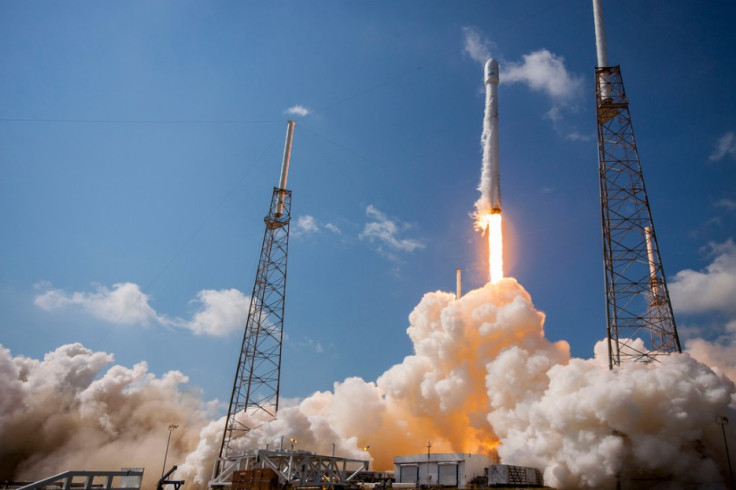SpaceX set to make history by launching its first reused Falcon 9 rocket into space
This launch will mark the first time SpaceX has attempted to reuse one of its rockets.

SpaceX is poised to make history on Thursday with the first relaunch of a used Falcon 9 rocket into space from Launch Complex 39A at Nasa's Kennedy Space Center in Florida. The space-transportation company is scheduled to launch SES-10, a commercial communications satellite for the Luxembourg-based satellite operator SES, into orbit at 6:27 PM EST (11:27 PM BST).
The rocket's lower section - first stage - has already been the space and back in the CRS-8 mission when it was sent cargo to the International Space Station for Nasa in April 2016. The booster was then successfully landed on a floating platform in the Atlantic.
This launch will mark the first time SpaceX has attempted to reuse one of its rockets in a major milestone for the company attempting to reuse rockets and considerably lower launch costs. Until now, rocket stages are typically discarded. The first stage and clamshell of the Falcon 9 rocket are new.
SpaceX will again attempt to land the first stage on the "Of Course I Still Love You" droneship in the Atlantic Ocean after takeoff, which means the vehicle could see more flight time going forward as well. The company has successfully landed and recovered eight rockets to date.
"We're at the edge of quite a significant bit of history here," Martin Halliwell, chief technology officer at SES said in a statement. "We've been through this thing with a fine-toothed comb. SpaceX have been through this with a fine-toothed comb. This booster is a really good booster, and we're confident."
SES is also getting a discount for launching the SES 10 satellite on a rocket with a previously flown first stage. New Falcon 9 rockets are usually advertised at around $62m (£49.8m) each.
Static fire test complete. Targeting Thursday, March 30 for Falcon 9 launch of SES-10. pic.twitter.com/0tZ7u6gngI
— SpaceX (@SpaceX) March 27, 2017
Halliwell said the reusability factor is not just "an issue about money."
"Will re-usability lead to cheaper prices? I hope so, but for us it's also about having a route to space," Halliwell told BBC News. "We've been waiting for six months now to fly SES-10, and that's because there was no other alternative opportunity.
"If we can start getting the rocket companies looking toward re-usability and going down this path, we should have much more flexibility in being able to launch our various different missions."
SpaceX and Tesla CEO Elon Musk has also long touted the concept of "full and rapid reusability" to revolutionise and reduce the cost of space access. With a backlog of 70 missions worth over $10m, the company plans to launch its Falcon 9 rockets every two to three weeks this year from the new launch pad at the Kennedy Space Centre.
"I think this is a really good milestone for the future of space flight," Musk said after the rocket booster's successful landing last year. "I think it's another step towards the stars. In order for us to really open up access to space, we've got to achieve full and rapid reusability. And being able to do that for the primary rocket booster is going to have a huge impact on cost."
The two and a half hour launch window is scheduled to open at 6:27PM EST on 30 March with the satellite deploying about 32 minutes after liftoff. It will be livestreamed on SpaceX's hosted webcast on YouTube.
© Copyright IBTimes 2025. All rights reserved.





















